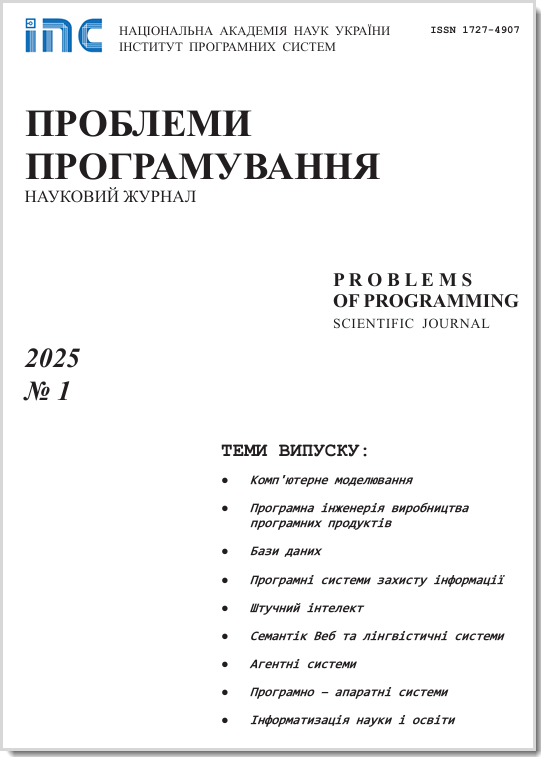Semantic annotation of Web-services
Abstract
Keywords
Full Text:
PDF (Українська)References
Kunal Verma. Semantically Annotating a Web Service / Accenture Technology Labs Amit Sheth/Wright State University.
Holger Lausen, Francisco Martin-Recuerda, Jos de-Bruijn, and Michael Stollberg. A Conceptual and Formal Framework for Semantic Web Services (v1) / University of Innsbruck.
Sudhir Agarwal. Formal Description of Web Services for Expressive Matchmaking. / Dipl.-Inform., Karlsruhe, 2007.
Emerson E.A. Temporal and modal logic. / In J. van Leeuwen, editor, Handbook of Theoretical Computer Science, volume B: Formal Models and Semantics // Elsevier Science Publishers B.V.: Amsterdam, The Netherlands, New York, N.Y., 1990. – P. 996–1072.
Sivashanmugam K., Verma K., Sheth A., Miller J. Adding Semantics to Web Services Standards // Proceedings of the 1st International Conference on Web Services (ICWS'03), Las Vegas, Nevada, June 2003. – P. 395–401.
The Web Service Modeling Framework. – http://www.wsmo.org/.
Sudhir Agarwal. A goal specification language for automated discovery and composition of web services./ In International Conference on Web Intelligence (WI ‘07), Silicon Valley, USA, NOV 2007.
Pistore M., Traverso P., Bertoli P., and Marconi A. Automated Synthesis of Composite BPEL4WS Web Services // In Proc. ICWS’05, 2005.
Cimatti A., Clarke E.M., Giunchiglia F. and Roveri M. NUSMV: a new symbolic model checker // International Journal on Software Tools for Technology Transfer, 2(4). – 2000.
Bertoli P., Cimatti A., Pistore M., Roveri M. and Traverso P. MBP: a Model Based Planner // In IJCAI-2001 workshop on Planning under Uncertainty and Incomplete Information, 2001.
Andrews T., Curbera F., Dolakia H. and al. Business Process Execution Language for Web Services (version 1.1), 2003.
WSDL – http://www.w3.org/TR/wsdl
Evren Sirin. Combining Description Logic Reasoning with AI Planning for Composition of WEB Services./ Dissertation submitted to the Faculty of the Graduate School of the University of Maryland, College Park in partial fulfillment of the requirements for the degree of Doctor of Philosophy, 2006.
Baader F. and Nutt W. Basic Description Logics. In Baader F., Calvanese D., McGuinness D., Nardi D., and Patel-Schneider P. editors. The Description Logic Handbook: Theory, Implementations and Applications, Cambridge University Press, 2003. – P. 43–95.
Ortiz M., Calvanese D., and Eiter T. Charac-terizing Data Complexity for Conjunctive Query Answering in Expressive Description Logics // AAAI. – 2006.
Staab S., Studer R. Handbook on Ontologies., Second edition, 2009.
Marco Pistore, Luca Spalazzi, and Paolo Traverso. A Minimalist Approach to Semantic Annotations for Web Processes Compositions // Universit`a di Trento – Via Sommarive 14 – 38050 Povo – Trento – ITALY pistore@dit.unitn.it, Universit`a Politecnica delle Marche – Via Brecce Bianche – 60131 Ancona – ITALY spalazzi@diiga.univpm.it, ITC-irst – Via Sommarive 18 – 38050 Povo – Trento – ITALY traverso@irst.itc.it, 2004.
Refbacks
- There are currently no refbacks.


